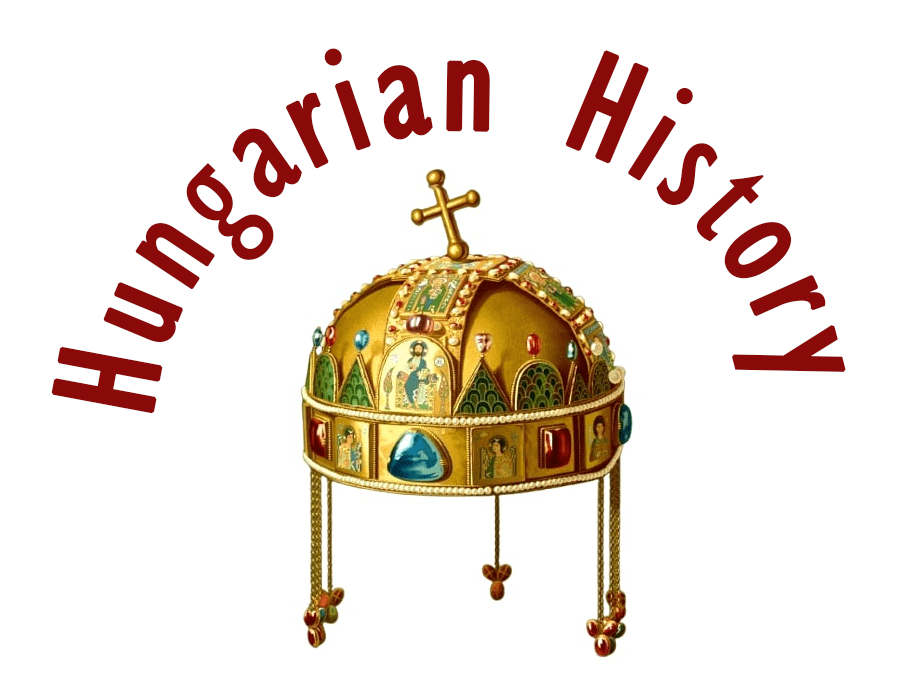Anjou Hedvig (Polish: Jadwiga Andegaweńska, Lithuanian: Jadvyga de Anjou; Buda, 18 February 1374 – Kraków, 17 July 1399) was a Hungarian royal princess of the House of Capeting-Anjou, the youngest daughter of King Lajos I of Hungary and Queen Erzsébet Kotromanić of Hungary, and after her father died in 1382, Queen of Poland. She was canonised by the Roman Catholic Church in 1997 and has since been known as Saint Hedvig (Hedwig).
Her only child, born to her husband, Lithuanian Grand Duke Jagelló (later King of Poland), died of puerperal fever after giving birth to Princess Elizabeth Boniface. The Hungarian royal line of the House of Anjou died with her death.

King Lajos the Great of Hungary had three daughters by Kotromanić Erzsébet: Katalin, Mária, and Hedvig. After the death of her father, Mária inherited the Hungarian throne. Following the privilege of Kassa, the Polish throne would also have passed to her and her future husband, King Zsigmond of Hungary, as King Lajos wished to leave the two countries in one. The Poles, however, demanded that the Queen should live in Cracow. As Hungarian queen, Mária was unable to meet this condition, so Hedvig inherited the Polish throne through the intercession of her mother, Kotromanić Erzsébet. Hedvig was crowned in 1384.
The documents refer to her as king (rex) because the official Latin language of the time did not distinguish between queens and kings, and it would not have been clear that she was a monarch. However, in the documents she issued, the title “Regina” is used.

Hedvig was originally betrothed to Prince William of Habsburg of Austria when she was four years old. However, the Poles expelled William of Habsburg, whom they refused to accept as their king.

Poland at this time was simultaneously threatened by the Teutonic Knights, who had settled in Pomerania in the 13th century, and the pagan Lithuanian Principality. So they approached the Lithuanian Grand Duke Jogaila (Jagelló) with a marriage proposal, including the possibility of founding a dynasty, on condition that he and his people converted to Christianity. Hedvig saw this as God’s will and agreed to the new marriage. The Union of Kreva, concluded in 1385, awarded compensation to William for the dissolution of the marriage, and Pope Boniface IX agreed to be godfather to Yogaila. The Grand Duke was baptised as Władysław (Latin: Ladislaus).

From 1386 until Hedvig’s death, Jagielló was co-regent iure uxoris, i.e., by right of his wife. Hedvig became a true advocate of the conversion of Lithuanians to Christianity, emphasising salvation and grace over her husband’s rather secular, violent ways. She urged that the livestock of those who were still confused and did not want to convert should not be taken away.
“Even if we returned their goods, who will return their tears?” she asked.

She called for the principle of persuasion in baptisms and for the training of the Lithuanian clergy. She also founded a college for Lithuanian theologians in Prague in 1397. He founded a novitiate in Cracow, where she obtained the establishment of a theological faculty from the Pope. She had a hospital built in the town of Biecz.
Let us now recall the conversion of the Lithuanian people to Christianity with the help of the Polish Latinist historian Jan Długosz.

Długosz, or Johannes Longinus (1 December 1415 – 19 May 1480), a Polish historian and diplomat who also had relations with Hungary, covers the reign of Hedvig and her husband, Ulászló Jagelló (1352-1434, originally known as Jogaila in Lithuanian) in chronological order in the tenth book of his monumental Latin-language annals, Annales Regni Poloniae.
After the baptism of the Lithuanian nobles, the whole Lithuanian nation was baptised, an event recorded in the Latin chronicle of Jan Długosz:
“In the year of our Lord 1387, King Ulászló went with Queen Hedvig to Lithuania, where, having broken the idols, he baptized all the people and gave them clothes brought from Poland, for which Pope Urban VI thanked him.
King Ulászló of Poland, as he had sworn an oath of allegiance to the Kingdom of Poland and Queen Hedvig, led the people of Lithuania away from pagan idolatry and superstition to the worship of the one true God and the Catholic religion. […] Together with Archbishop Bodzanta of Gniezno and several churchmen, religious and exemplary persons, whose teaching, care, and work had enabled the Christian religion to flourish among the pagan rite-practising people, he set out from the Kingdom of Poland for Lithuania, where Christ was hitherto unknown and invisible. […]
When they arrived in Lithuania, they held a meeting in Vilnius on Ash Wednesday. When a large number of Ulászló’s brothers, soldiers and people had gathered, King Ulászló of Poland, with the help of the Catholic high priests, worked for several days to persuade the soldiers and people to abandon the false gods that the deceived pagans had hitherto worshipped, and to honour, worship and believe in the one true God.
The pagans resisted, claiming that it would be evil and foolhardy to abandon and destroy the traditions and gods of their ancestors. (These were mainly: the fire, which they believed burned forever – fed by their priests with wood day and night – the sacred forests, which they believed were where their gods lived and hid, and the snakes and serpents, which they also believed were where their gods lived and hid.)
King Ulászló ordered the fire in the capital, Vilnius, to be extinguished in full view of the heathen, which had hitherto been fed by a careful supply of wood, and which was said never to go out, and which was guarded by the priest, called in their language znicz, who gave false prophecies to supplicants and inquirers of coming events, as if he had received them from the gods.
He also ordered the altars and shrines of the gods where sacrifices were offered to be destroyed, the forests which were considered sacred to be cut down and the groves there destroyed, and the snakes and serpents which were kept in each house as domestic deities to be killed and destroyed. The heathen only accompanied the destruction and extermination of their gods with weeping and wailing, for they dared not protest against the king’s command.
When the idols were smashed and destroyed, and the people realized that their gods were false, from which they had hitherto mistakenly hoped for help, the whole Lithuanian people readily and obediently accepted the Christian faith and turned from their old errors. For a few days, they learned the doctrines of the Christian faith in which they must believe, the Lord’s Prayer, and the Apostles’ Creed from the Polish priests, but even more from King Ulászló, who knew the language of the people and was thus more easily understood.
Born again by the holy water of baptism, the pious monarch Ulászló gave all the people new clothes from the stock brought from Poland, tunics and other garments. By this caring generosity and gifts, he caused the hitherto simple and poor people, who had hitherto worn linen garments, to rush in droves from all provinces to be baptized, after the news of the king’s generosity had spread.
Since it would have been a huge task to baptize all the believers individually, the masses of both genders of the Lithuanian people were divided into groups and sections by order of the king. Each group and all those in it were sprinkled with a sufficient quantity of holy water, and then each group and all the people were given a new Christian name, and the pagan names were abolished. The first group was called Peter, the second Paul, the third John, the fourth James, and the fifth Sanislo. The women, who also formed separate groups, were given appropriate names: Catherine, Margaret, Dorothea, according to the number and size of the groups.”

Hedvig and Jagelló, despite their different personalities, worked together to develop their country. Together, they founded the Bishopric of Vilnius. They re-founded the financially troubled Cracow Academy (studium generale, now Jagiellonian University), for which Hedvig donated her jewels. She died of childbed fever at the age of 25, four days after the birth of her daughter Elisabeth Boniface.

According to the Roman Catholic Church, she died in a state of sainthood. Her near canonisation was so assured by the Poles that she was buried under the altar of Wawel Cathedral in Cracow, not in the crypt where royal families were buried. Although canonisation or elevation was still a long way off, Jadwiga’s veneration, as the Poles call it, remained unbroken, and she was depicted everywhere as a saint in the company of saints. However, it was only the first Polish Pope, John Paul II, who, having previously worked on her beatification as a cardinal, canonized her on 8 June 1997.

Saint Hedvig has been the patron saint of the Danube Bend since 2006. On 30 October 2013, a statue in her honour was unveiled at the wall of the Buda Castle (by Lithuanian sculptor Daliutė Ona Matulaitė).
Sources: Dr. Bíró Csilla, Hungarian Research Institute (Magyarságkutató Intézet), and the Hungarian Wikipedia.
Dear Readers, I can only make this content available through small donations or by selling my books or T-shirts.
Please, support me with a coffee here: https://www.buymeacoffee.com/duhoxoxa
You can check out my books on Amazon or Draft2Digital. They are available in hardcover, paperback, or ebook:
https://www.amazon.com/dp/198020490X or at https://books2read.com/b/boYd81

My work can also be followed and supported on Patreon: Become a Patron!http://Become a Patron!
Become a Patron! Donations can be sent by PayPal, too: https://tinyurl.com/yknsvbk7


https://hungarianottomanwars.myspreadshop.com/all
Subscribe to my newsletter here: https://tinyurl.com/4jdjbfkn

